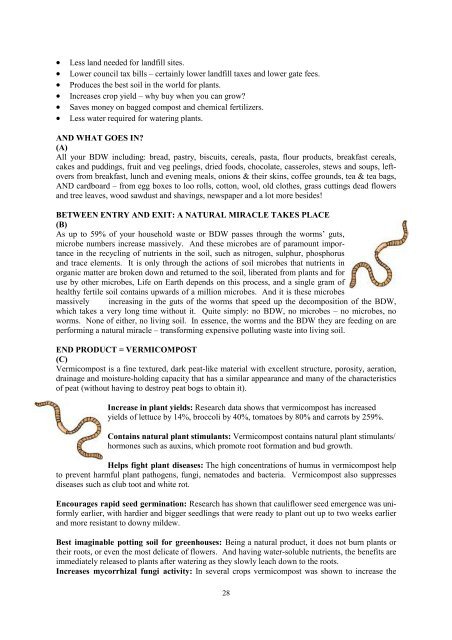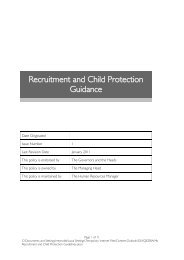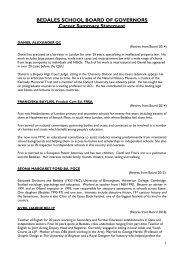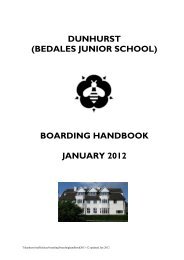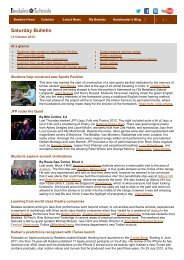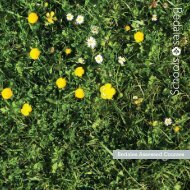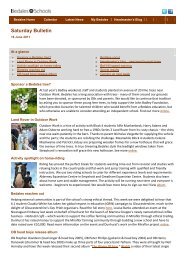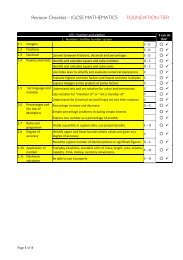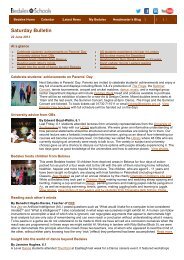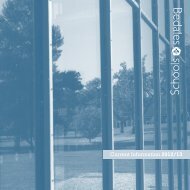Create successful ePaper yourself
Turn your PDF publications into a flip-book with our unique Google optimized e-Paper software.
• Less land needed for landfill sites.• Lower council tax bills – certainly lower landfill taxes and lower gate fees.• Produces the best soil in the world for plants.• Increases crop yield – why buy when you can grow?• Saves money on bagged compost and chemical fertilizers.• Less water required for watering plants.AND WHAT GOES IN?(A)All your BDW including: bread, pastry, biscuits, cereals, pasta, flour products, breakfast cereals,cakes and puddings, fruit and veg peelings, dried foods, chocolate, casseroles, stews and soups, leftoversfrom breakfast, lunch and evening meals, onions & their skins, coffee grounds, tea & tea bags,AND cardboard – from egg boxes to loo rolls, cotton, wool, old clothes, grass cuttings dead flowersand tree leaves, wood sawdust and shavings, newspaper and a lot more besides!BETWEEN ENTRY AND EXIT: A NATURAL MIRACLE TAKES PLACE(B)As up to 59% of your household waste or BDW passes through the worms’ guts,microbe numbers increase massively. And these microbes are of paramount importancein the recycling of nutrients in the soil, such as nitrogen, sulphur, phosphorusand trace elements. It is only through the actions of soil microbes that nutrients inorganic matter are broken down and returned to the soil, liberated from plants and foruse by other microbes, Life on Earth depends on this process, and a single gram ofhealthy fertile soil contains upwards of a million microbes. And it is these microbesmassively increasing in the guts of the worms that speed up the decomposition of the BDW,which takes a very long time without it. Quite simply: no BDW, no microbes – no microbes, noworms. None of either, no living soil. In essence, the worms and the BDW they are feeding on areperforming a natural miracle – transforming expensive polluting waste into living soil.END PRODUCT = VERMICOMPOST(C)Vermicompost is a fine textured, dark peat-like material with excellent structure, porosity, aeration,drainage and moisture-holding capacity that has a similar appearance and many of the characteristicsof peat (without having to destroy peat bogs to obtain it).Increase in plant yields: Research data shows that vermicompost has increasedyields of lettuce by 14%, broccoli by 40%, tomatoes by 80% and carrots by 259%.Contains natural plant stimulants: Vermicompost contains natural plant stimulants/hormones such as auxins, which promote root formation and bud growth.Helps fight plant diseases: The high concentrations of humus in vermicompost helpto prevent harmful plant pathogens, fungi, nematodes and bacteria. Vermicompost also suppressesdiseases such as club toot and white rot.Encourages rapid seed germination: Research has shown that cauliflower seed emergence was uniformlyearlier, with hardier and bigger seedlings that were ready to plant out up to two weeks earlierand more resistant to downy mildew.Best imaginable potting soil for greenhouses: Being a natural product, it does not burn plants ortheir roots, or even the most delicate of flowers. And having water-soluble nutrients, the benefits areimmediately released to plants after watering as they slowly leach down to the roots.Increases mycorrhizal fungi activity: In several crops vermicompost was shown to increase the28


